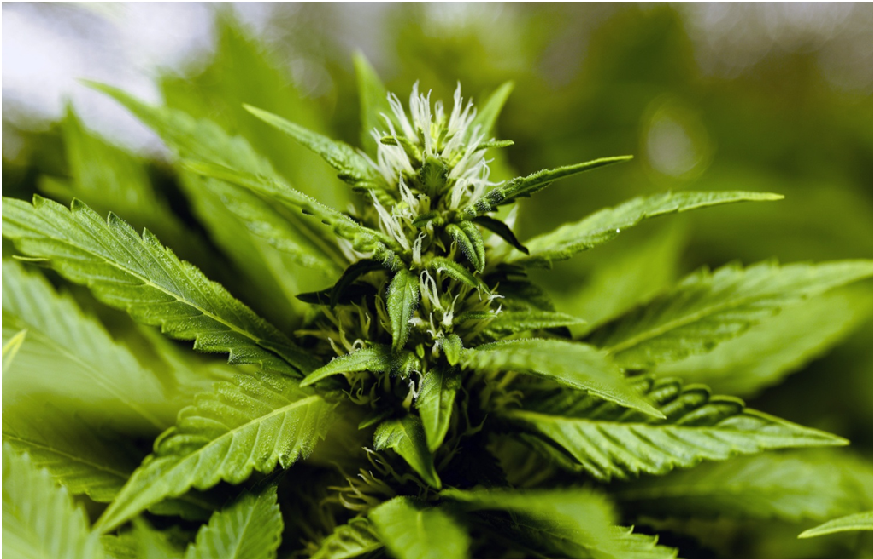An Introductory Guide to the Different Types of Terpenes

The global cannabis terpenes market reached $665.15 million in 2020. More people are starting to recognize the benefits of terpenes on their own. However, not many people realize there are different types of terpenes to consider.
What are terpenes, exactly? What do terpenes even do? Keep reading to find out!
After reading this guide, you can find cannabis products that contain the types of terpenes you need. Otherwise, you might struggle to choose between products.
Become a savvy shopper this year! Learn everything you need to know about cannabis terpenes with this guide today.
What Are Terpenes?
First, let’s go over the basics. What are terpenes, exactly?
Terpenes are naturally occurring chemical compounds. They’re found in both plants and certain animals.
Different types of terpenes can produce different flavors and aromas. They can even impact the colors associated with types of vegetation, too.
Manufacturers can now isolate terpenes. They can add terpenes to create scents and flavors in different products. For example, they’re often found in foods, body products, and perfumes.
Terpenes are often processed for consumer products like pesticides, cleaning solutions, and dyes. Some terpenes can produce therapeutic benefits as well.
Almost every plant species contains terpenes. However, their more commonly found in:
- Cannabis
- Citrus fruits
- Herbs like thyme, rosemary, and sage
In nature, terpenes protect plants from hungry animals or infectious germs. Some even attract pollinators. Other terpenes can help a plant recover from damage or boost its immunity.
With cannabis, terpenes can make unique strains smell or taste differently. Most people associate terpenes with cannabis because cannabis plants contain high concentrations.
Certain terpenes can offer health benefits, too. It’s important to note that scientists are still exploring their potential health benefits.
What Do Terpenes Do?
Want to learn how to use terpenes as part of your daily routine? First, it helps to learn more about what they do.
Remember, some terpenes can protect plants from predators. They could protect a plan from harsh weather as well. There’s still some mystery as to how they can affect the human body, though.
More cannabis researchers are looking into how different types of terpenes can impact the human body.
Some researchers believe the terpene profile of a cannabis strain works in tandem with the cannabinoid content. There are different types of cannabinoids, including tetrahydrocannabinol (THC) and cannabidiol (CBD). Together, terpenes and cannabinoids can produce specific effects.
Some types of terpenes are psychoactive. Though they won’t get you high in the traditional sense, they can still affect the brain. Terpenes aren’t intoxicating alone, though.
Some researchers believe terpenes can influence the effects of THC. THC is the cannabinoid that causes a psychoactive high.
Instead of focusing on THC content when choosing a cannabis strain, you might want to consider terpene profiles instead.
You can learn more about cannabis derived terpenes here.
Together, terpenes and cannabinoids could cause an entourage effect. They could produce enhanced benefits as a result. In fact, terpenes might benefit people with depression, anxiety, or bipolar disorder.
Different Types
One cannabis flower can contain over 100 different types of terpenes. Some are better known than others, though.
Here are a few common types of terpenes you might want to consider when exploring different cannabis strains.
Myrcene
One of the most abundant terpenes found in cannabis is myrcene. It has a musky, earthy scent that resembles cloves. It can have a grape-like or fruity aroma as well.
Most strains that contain myrcene are indicas. It can reduce inflammation, which could help ease chronic pain. This terpene might have sedative effects as well.
Strains that contain myrcene could help patients who are undergoing cancer treatment.
Mango contains myrcene as well. You might consider consuming mango before smoking cannabis. It could boost the absorption rate and effects.
Limonene
The second most abundant terpene found in cannabis strains is limonene.
Limonene can give strains a citrusy, lemon-like smell. All citrus fruits have large amounts of limonene. It’s also used in cleaning products and cosmetics.
Limonene could boost your mood while easing stress. It also has antibacterial and antifungal properties.
Linalool
The spicy, floral smell associated with marijuana is due in part thanks to linalool. This terpene could help patients with seizures, depression, or arthritis. It could help patients suffering from insomnia, too.
Linalool has relaxing and sedative properties.
Caryophyllene
As you explore different cannabis terpenes, consider the benefits of terpenes like caryophyllene.
Caryophyllene is found in spices, cloves, cinnamon, and black pepper. It has a spicy, pepper note.
It’s often used in anti-inflammatory creams and topicals. It’s the only terpene that can bind to cannabinoid receptors.
Caryophyllene provides anti-anxiety and analgesic properties. It might help with alcoholism rehabilitation by reducing voluntary intake of alcohol, too.
Alpha-pinene and Beta-pinene
These cannabis terpenes have a pine tree scent. They’re found in basil, parsley, orange peels, and rosemary.
Like many different types of terpenes, pinene terpenes have anti-inflammatory effects. They could improve respiratory functions and airflow. They might help patients with asthma and arthritis, too.
Alpha-bisabolol
This terpene has a floral aroma. It’s also found in candeia and chamomile. Alpha-bisabolol is found in many cosmetics products.
Its analgesic and anti-irritation properties could help when treating bacterial infections and wounds.
Eucalyptol
Eucalyptol has a minty, cool tone. It’s not found in large amounts within most cannabis strains, though.
Eucalyptol is used in medicine and cosmetics. It could help relieve pain. It might slow the growth of fungi and bacteria, too.
Trans-nerolidol
This terpene is found in lemongrass, jasmine, and tea tree oil. It has citrus, floral, and woody tones.
Trans-nerolidol contains anticancer, antifungal, antimicrobial, antiparasitic, and antioxidant properties.
Humulene
Humulene has earthy, spicy, and woody tones. It’s found in black pepper, sage, and clove.
It could help prevent cancer cells from growing. It might ease inflammation to fight pain, too.
Consider Cannabinoids: Understanding the Different Types of Terpenes
Understanding the different types of terpenes can help you determine which cannabis strains you want to try. Keep these types of terpenes in mind. The next time you decide to shop, you can make a more informed choice!
Hunting for more helpful tips, tricks, and guides? You’re in the right place!
Check out our latest articles today for more helpful tips.







